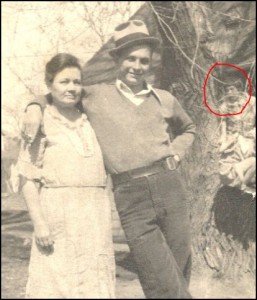Flowers have been a regular custom on Mother’s day for my father and his father. I remember my father giving my mother a palate of pansies  every Mother’s day. He would present them to her after church and then plant them for her with her. I just learned two weeks ago that his father would give his wife (my grandmother) the same gift, but he would give them to her in the front yard of their house on 47th and Seward in Omaha by planting them himself in a large planter that he had purposely built for that reason. I learned that from an 85 year old cousin that grew up next door to my grandparents. Her mother was my grandmother’s sister. She is in the tree behind my father and his mother in this picture.
every Mother’s day. He would present them to her after church and then plant them for her with her. I just learned two weeks ago that his father would give his wife (my grandmother) the same gift, but he would give them to her in the front yard of their house on 47th and Seward in Omaha by planting them himself in a large planter that he had purposely built for that reason. I learned that from an 85 year old cousin that grew up next door to my grandparents. Her mother was my grandmother’s sister. She is in the tree behind my father and his mother in this picture.
As we look forward to celebrating Mother’s day this coming Sunday, I thought you might be interested in hearing how Mother’s Day started. Here’s what I learned about it.
Anna M. Jarvis (1864–1948) first suggested the national observance of an annual day honoring all mothers because she had loved her own mother so dearly. At a memorial service for her mother on May 10, 1908, Miss Jarvis gave a carnation (her mother’s favorite flower) to each person who attended. Within the next few years, the idea of a day to honor mothers gained popularity, and Mother’s Day was observed in a number of large cities in the U.S. On May 9, 1914, by an act of Congress, President Woodrow Wilson proclaimed the second Sunday in May as Mother’s Day. He established the day as a time for “public expression of our love and reverence for the mothers of our country.” By then it had become customary to wear white carnations to honor departed mothers and red to honor the living, a custom that continues to this day.
Chuck
“Honor your father and your mother, that your days may be long in the land that the LORD your God is giving you.” Exodus 20:12